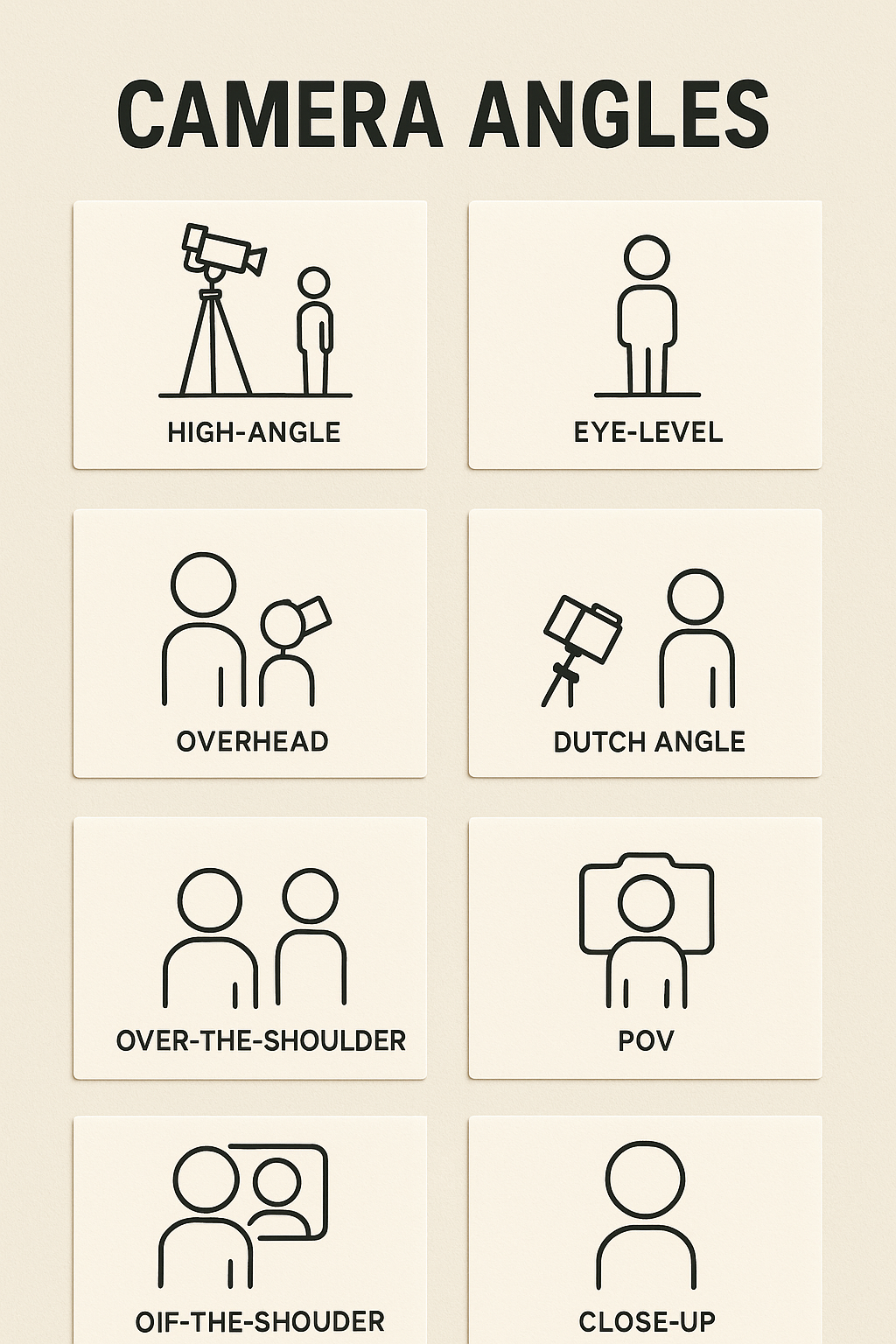The Power of Perspective: Exploring the Use of Camera Angles in Film and Photography
In the world of visual storytelling, what you show is important—but how you show it can be even more powerful. Camera angles are one of the most essential tools in a filmmaker or photographer’s toolkit. They shape the viewer’s perception, guide emotional responses, and subtly (or not-so-subtly) influence the narrative.
Whether you're a budding content creator, an aspiring director, or just someone who loves movies and wants to understand them better, let’s break down how camera angles work and why they matter.
Why Camera Angles Matter
Camera angles determine the position of the viewer relative to the subject. This position affects how we interpret the scene—whether it’s conveying dominance, vulnerability, chaos, intimacy, or detachment.
Think of camera angles as the "voice" of the camera. Just as a writer chooses specific words to influence a reader’s emotions, a filmmaker chooses specific angles to speak to the audience without words.
Key Camera Angles and What They Communicate
1. High Angle
What it is: The camera looks down on the subject.
Effect: This angle tends to make the subject appear small, weak, or vulnerable. It’s often used to show power dynamics or to emphasize a character’s emotional state.
Example: In The Lord of the Rings, high angles are used to show Frodo’s growing sense of helplessness as the ring’s burden increases.
2. Low Angle
What it is: The camera looks up at the subject.
Effect: The subject appears powerful, dominant, or intimidating. It’s a favorite for villains—or heroes having a moment of triumph.
Example: In superhero films, characters like Batman or Iron Man are often shot from low angles to emphasize their commanding presence.
3. Eye-Level
What it is: The camera is positioned at the same height as the subject.
Effect: This neutral angle creates a sense of realism and equality between the viewer and the subject. It’s common in dialogue scenes to maintain a natural connection.
Example: Used throughout dramas and documentaries to create an honest, direct tone.
4. Bird’s Eye View (Overhead Shot)
What it is: The camera is directly above the subject, looking straight down.
Effect: This perspective can make characters look insignificant or can offer a sense of order, structure, or even surveillance. It’s great for showcasing geography, choreography, or mood.
Example: Stanley Kubrick often used this angle to reinforce symmetry and disorientation in The Shining.
5. Worm’s Eye View
What it is: The extreme opposite of the bird’s eye—looking straight up from the ground.
Effect: It can make the world feel large and overwhelming, or emphasize the height and scale of a subject.
Example: Used in sci-fi or fantasy to make creatures, buildings, or trees seem towering and colossal.
6. Dutch Angle (Tilted Shot)
What it is: The camera is tilted off-axis.
Effect: Creates a sense of unease, disorientation, or psychological tension. It’s a stylistic choice often used to signal something is “off.”
Example: Frequently seen in thrillers or horror films to visually represent instability.
More Than Just Angles: Movement and Composition
Angles are just the start. Combine them with camera movement—like tracking, panning, or zooming—and you have even more power to direct the viewer’s attention and feelings.
The composition within the angle (where characters are placed in the frame) also plays a critical role. For instance, shooting from a low angle with the subject dead center gives a different effect than if they’re off to one side.
Final Thoughts: Intention Is Everything
Good camera work doesn’t draw attention to itself—it serves the story. Whether subtle or dramatic, every camera angle should be a conscious choice that supports the mood, theme, or character development.
So next time you're watching a film, pause for a second and ask yourself: Why did the director choose this angle? You might be surprised how much storytelling is happening without a single word spoken.
Got a favorite camera angle or a scene where it was used perfectly? Drop it in the comments—I’d love to hear your take!

